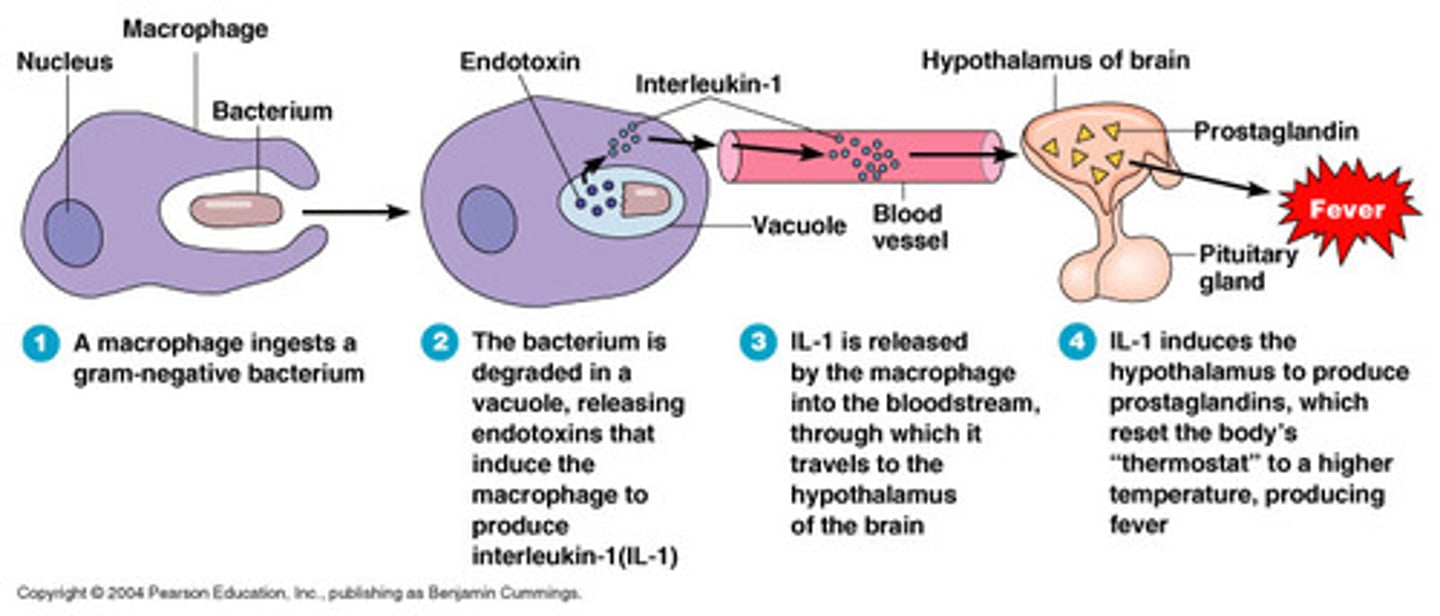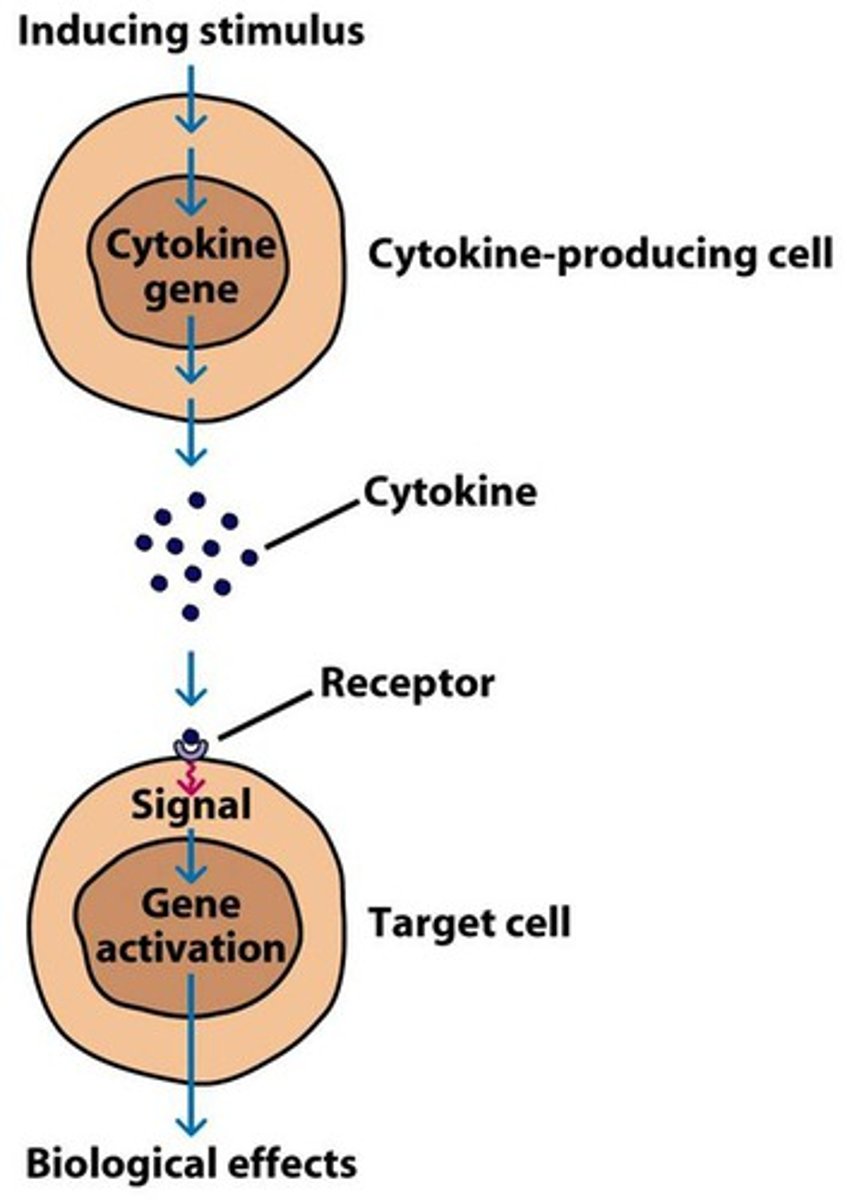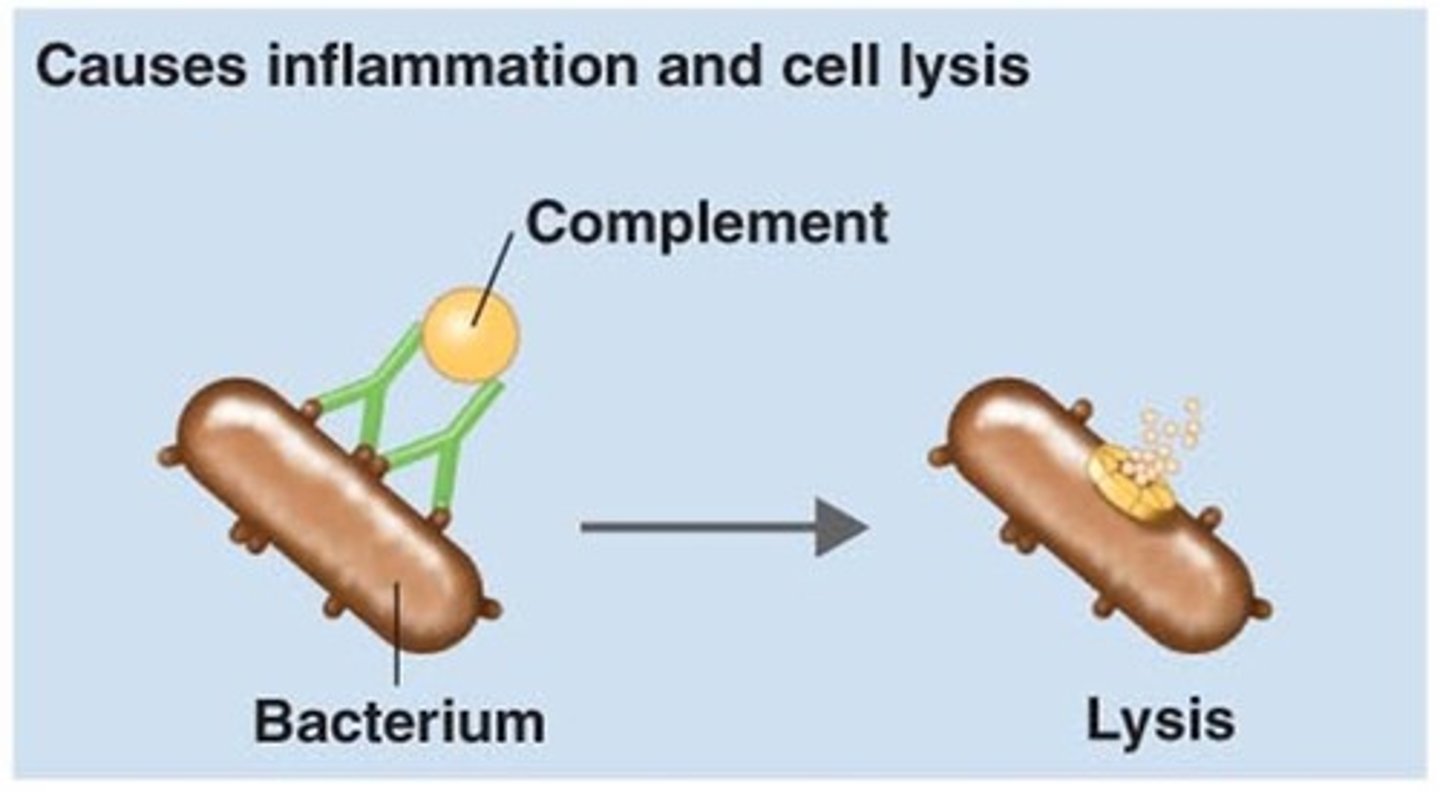inflammation
1/16
There's no tags or description
Looks like no tags are added yet.
Name | Mastery | Learn | Test | Matching | Spaced |
|---|
No study sessions yet.
17 Terms
What is a pyrogen?
induces fever
bind to neurons in hypothalamus range that control temperature --> forces it up

What is exudate fluid?
fluid that has plasma proteins in it
What is the role of PMN neutrophils?
they migrate to injury
phagocytosis of bacteria
remove bacteria and debris
What do cytokines do?
stimulate inflammation
composed of Interlocken--> increasing fever

What do chemokines do?
They are cytokines that produce chemotaxis
directing leukocytes toward injury
=repair tissue
What are the response that occur because of leaking plasma proteins?
bradykinin
clotting factors
complement proteins
What is the role of bradykinins?
similar actions to histamine
pain mediator (triggers pain)

What is the role of leaked clotting factors?
clot form in the interstitial space (of the injury) --> essential walls of the area
What is the role of complement proteins?
help with flagging and then targeting bacteria
helps with lysis the bacteria
produced by the liver

What are the two types of pyrogens?
EXOGENOUS= cells not normally in body
(bacterial toxins)
ENDOGENOUS= inside own body cells
(interleukin= by activated WBC, prostaglandins= injured cells)
What are the benefits of fever
increase the activity of immune cells
decrease Fe for bacteria (they use if for growth)
What are some possible damaging effects of fever?
increase fluid loss--> dehydration
in young child a high fever can lead to seizures
What are acute-phase reactants?
serum proteins that increase rapidly during inflammation are used to test for inflammation
What are some specfic changes to WBC count?
increase in young neutrophils--> bacterial
increase in eosinophils --> parasitic
increase in lymphocytes --> viral
What are some risks of abnormally high levels of cytokines (cytokine storm)?
disseminated intravascular coagulation (spread of clotting outside damaged area)
hypotension--> shock
organ damage
immune paralysis
What is complete resolution?
when tissue is replaced with original tissue
no scar tissue
What is fibrosis resolution?
some healing but with fiber--> CT
CT= loss in function